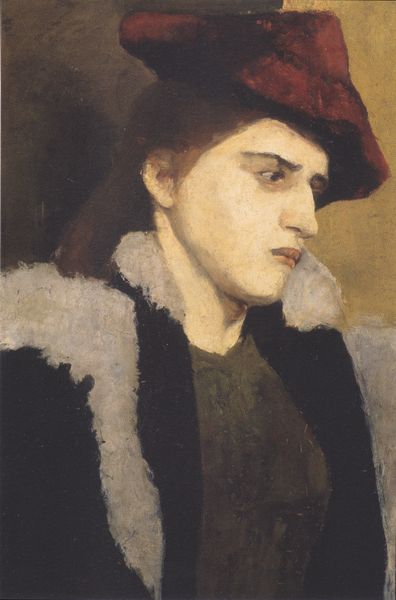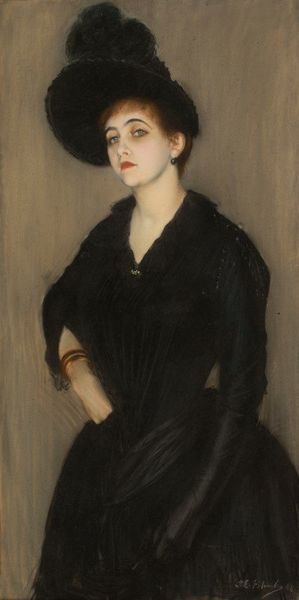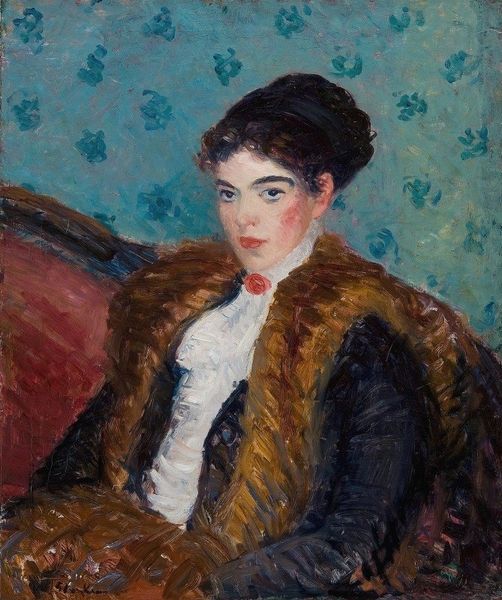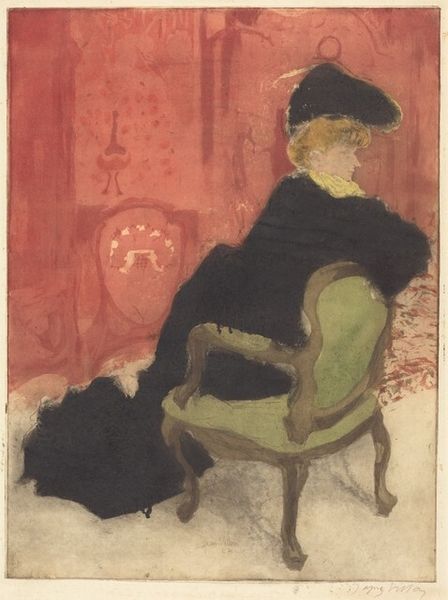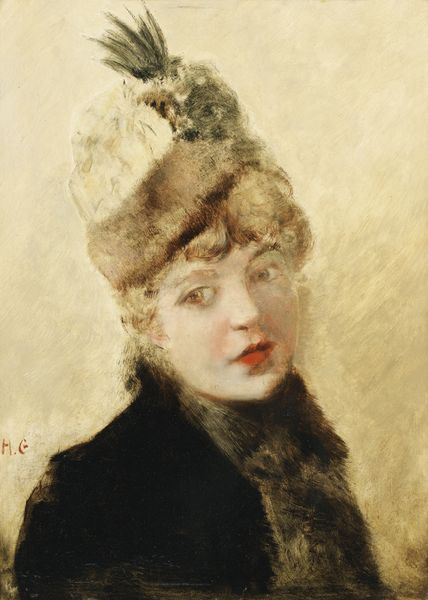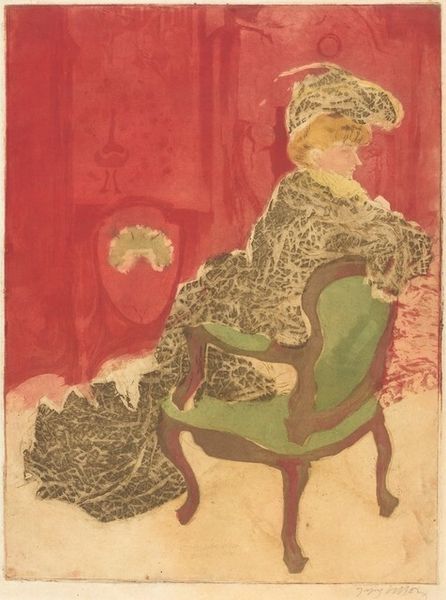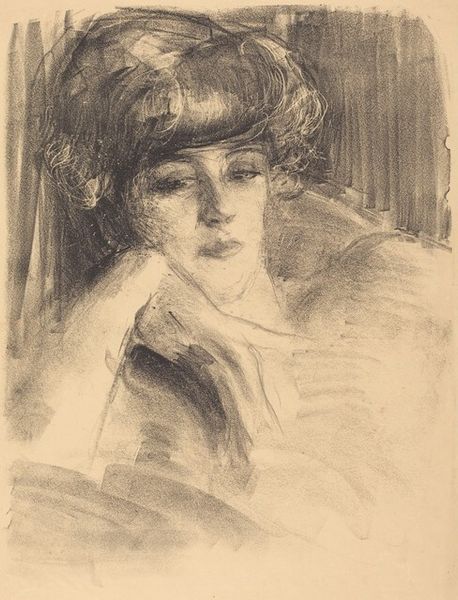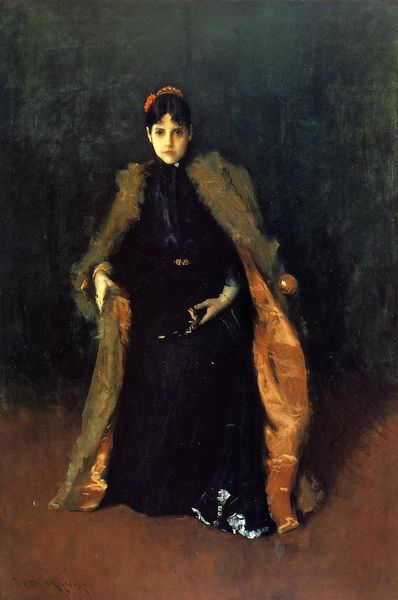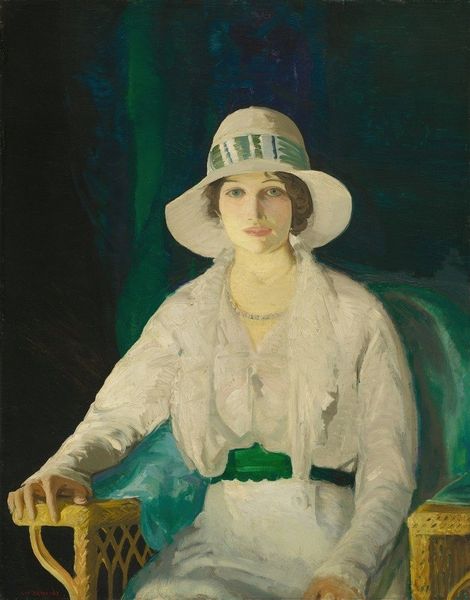
painting, oil-paint
#
portrait
#
painting
#
oil-paint
#
intimism
#
modernism
#
realism
Dimensions: 61 x 50 cm
Copyright: Public domain
Curator: Welcome, everyone. We are looking at "The Parisienne," an oil painting from 1924 by Australian artist Agnes Goodsir. Editor: The palette immediately strikes me—muted greys and blacks punctuated by a pop of lipstick red and the gleam of gold rings. There is an elegant formalism in the contrast. Curator: The choice of subdued colours serves a distinct purpose. Goodsir moved to Paris, a hub for artists, and to capture a sitter like this one was no easy feat. Editor: Absolutely. And those textures! The rough weave of what looks like a tweed jacket contrasted with the smoother strokes suggesting the hat and face – it’s quite clever how the light defines those subtle planes. Curator: Indeed, look closer at the accessories, particularly those rings; they indicate her sitter belongs to a particular class, perhaps. They serve not just an aesthetic, but an economic purpose too. Goodsir uses accessories and fashionable clothes to show the sitters social status in a fast changing and highly segregated society. Editor: Perhaps, but also there’s a psychological tension between this elegant figure and their disaffected gaze. She is holding a cigarette and has rings on both fingers - a conscious statement. Curator: You are drawn to the sitters hand that is holding a cigarette and all those adornments - this shows how deeply the industrial boom in the 1920s shaped a woman's self-perception, even down to the little details. Editor: Quite, quite. Ultimately, Goodsir achieves more than a mere representation of social stratification; she constructs a subtle dance between surface and depth. I was captured by her expression of modernity in portraiture and formal mastery with those details and texture and colour composition. Curator: The portrait indeed speaks to the way labour and new consumer items changed and shaped one’s perception and social role. And that’s a perfect entry point to keep contemplating how painting intersects art and commerce.
Comments
No comments
Be the first to comment and join the conversation on the ultimate creative platform.
